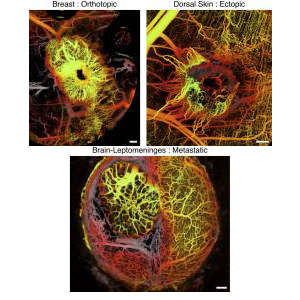
This article has not necessarily been edited by Health24.
TUESDAY, March 16 (HealthDay News) -- Researchers have succeeded in freezing away breast and prostate tumors in a small number of patients, opening a promising door to a new generation of cancer treatments.
In two separate studies to be presented Tuesday at the Society of Interventional Radiology's annual meeting in Tampa, Fla., research teams reported success using cryotherapy to freeze and destroy malignant tumors. In the prostate cancer patients, cryotherapy occurred after surgery, while the women in the breast cancer study had no surgery.
Cryotherapy has been used in different oncology settings in the past, but these studies were innovative in that they used multiple probes to kill the tumor and/or MRI to guide the procedure.
The prostate study involved four patients whose cancer had recurred after prostate removal. All had had some radiation treatment in addition to surgery.
"We found a subgroup of patients . . . where we have basically exhausted everything we can do for them," said study lead author Dr. David A. Woodrum, interventional radiologist at the Mayo Clinic in Rochester, Minn.
Two of the prostate cancer patients underwent cryoablation, which uses very low temperatures to kill the tumor, while the other two underwent thermal therapy, which uses high temperatures to achieve the same goal. This approach was also successful.
"We used magnetic resonance imaging to place somewhere between one and three probes [basically small needles] into the tumor and then we perform the ablation," Woodrum said. "We don't have a radiation risk, so we can use sequential imaging approximately every six to 10 seconds to image the area and see either the tissue heating up from the laser or the tissue freezing from the cryoablation."
The imaging allowed extra precision so that adjacent organs, such as the bladder and urethra, were less likely to be damaged.
"The MR imaging is helpful and innovative because it has been demonstrated by some investigators to image the malignant prostate cancer better than ultrasound," said Dr. K. Scott Coffield, professor of surgery at Texas A&M Health Science Center College of Medicine and a urologist-oncologist with Scott & White Healthcare in Temple.
But the technique may not work with very small masses, he cautioned.
Traditionally, cryoablation to treat prostate cancer has been paired with ultrasound, he added.
The breast study involved 13 women who had refused surgery for breast cancer and underwent cryotherapy to eliminate their tumors instead.
Biopsies performed after the procedures were negative, and the women did not need follow-up surgery, according to the study authors, from Karmanos Cancer Institute and Wayne State University in Detroit. In other words, they were able to keep their breast.
Again, the investigators used probes inserted through the skin to deliver the cold gas intended to kill the cancer. The probes were guided using ultrasound alone or ultrasound plus computed tomography.
The women were followed up with MRI scans and clinical exams.
"We've had problems with this type of therapy in the past with the kill zone, but now, using multiple probes you can extend that," said Dr. Debra Monticciolo, professor of radiology at Texas A&M Health Science Center College of Medicine and vice chair of research in radiology and chief of breast imaging at Scott & White in Temple. "That's a smart idea. The concept is good, but we need a bigger study with longer follow-up. It takes a while for a couple of tumor cells left behind to gather enough steam to be noticed," she added.
"This is investigative, but it shows a lot of promise," Monticciolo said.
More information
The U.S. National Cancer Institute has more on using cryosurgery to treat cancer.




 Publications
Publications
 Partners
Partners















